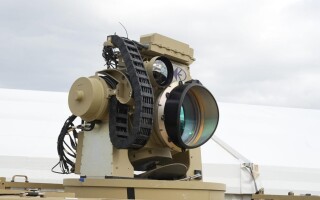GUEST BLOG: Enabling rapid deployment through modular software architectures and third-party ecosystems
BlogSeptember 09, 2024

At a time when digital superiority defines global security, the defense sector faces a critical challenge: that of deploying software updates swiftly without compromising safety or certification standards. There is a solution – modular, certifiable software architectures built on open standards. By fostering a collaborative ecosystem of innovation, this approach enables rapid deployment, seamless integration of third-party capabilities and streamlined certification processes.
In high-stakes domains like defense and aerospace, the ability to swiftly deploy and update software can mean the difference between victory and vulnerability. Yet, these critical sectors often find themselves constrained by legacy systems and cumbersome certification processes, struggling to keep pace with emerging threats. The solution? A shift toward open standards and modular, certifiable software architectures that enable rapid, secure deployment.
In modern operational environments, security is increasingly defined by both speed and performance. This principle isn’t just a technology goal; it’s a call to action in sectors where outdated software can have dire consequences. The strategy calls for the use of standards-based platforms and collaborative partnerships, laying the groundwork for transformative capabilities delivered at the new speed of dominance.
By embracing open standards, companies can create a universal language for these systems, enabling third parties to integrate and customize them seamlessly. This approach fosters an ecosystem where innovation can flourish, while maintaining the highest standards of safety and security.
The concept of “thriving on secure, safe, open standards” is becoming a mantra in the industry. In a field often wary of openness due to security concerns, this notion turns traditional thinking on its head. Leading-edge platforms are not merely adapted for open standards but are inherently designed around them. This approach ensures that systems remain interoperable and flexible while upholding the stringent safety and security certifications at the center of aerospace and defense.
For instance, prioritizing MOSA [modular open systems approach] use cases as defined by the end user enables a concentrated focus on the change containment boundaries, which are essential for supporting a delta-certification framework for ongoing updates and integration of new capabilities. Adopting established frameworks like ARINC-653; the Future Airborne Capability Environment, or FACE, Technical Standard; and VirtIO to define these boundaries is key to a successful MOSA implementation. As acquisitions struggle to keep pace with the rapid releases and updates of open standards for hosted capabilities (e.g., user applications), this approach will optimize the use of high technology readiness level (TRL) technologies while minimizing alignment inconsistencies within the hosted capabilities.
Based on standardized principles, the resulting modular platforms offer the added benefit of comprehensive certification data. This bureaucratic breakthrough transforms the highly regulated environments where each software update typically requires navigating a labyrinth of approvals. This newer, standards-based modular approach allows components to be rapidly fielded and updated without sacrificing compliance.
Furthermore, this approach is aligned with the best-in-class modern software methodologies. The ability to deploy software at speed and performance supports agile practices like DevSecOps [development, security, and operations] and continuous integration/continuous deployment (CI/CD). In a world where threats evolve by the hour, these platforms enable defense and aerospace to iterate quickly, test rigorously, and deploy confidently while maintaining top-tier security.
This is a vision that extends beyond any single company’s innovations. U.S. Department of Defense (DoD) programs are increasingly encouraging building lasting partnerships and interoperability between suppliers to foster enduring innovation. Companies are providing clear guidelines and hands-on support for partners to enhance and integrate their systems with core platforms, all of which require a collaborative ethos to ensure that the global network of innovators can rapidly develop and certify new capabilities as threats evolve, keeping critical systems ahead of the curve. The use of open standards in platforms like LYNX MOSA.ic demonstrates how a collaborative, standards-based approach can enhance innovation and maintain the technological edge required to meet evolving threats.
The growing role of standards and collaboration is further exemplified by events such as the annual MOSA Industry & Government Summit This summit facilitates lasting partnerships among industry, academia, and government, helping to shape holistic business and technical strategies that meet the warfighter’s needs. Through demonstrated openness, panel sessions on execution strategies, need statements, lessons learned, and more, continuous participation in these events and the consortium bodies that govern the maturation of open standards is crucial for achieving the government’s MOSA objectives.
In essence, the DoD is rewriting the rules of engagement in critical domains. Standards-based, modular architectures don’t just enable rapid software deployment; they help make it secure, certified, and collaboratively driven. This approach is not just innovative; it’s essential in sectors where failure is not an option and adversaries are constantly probing for weakness.
Erik Vallow is director of technical product marketing at Lynx Software Technologies. Dr. Justin Pearson is Lynx’s director of systems architecture.
Lynx Software Technologies www.lynx.com







